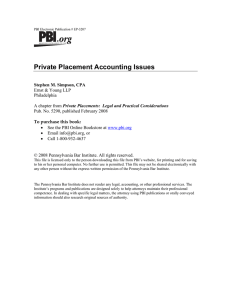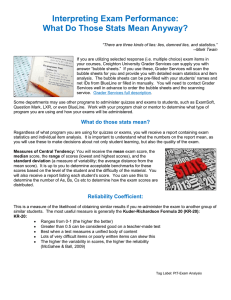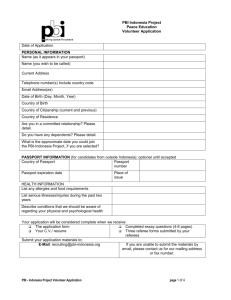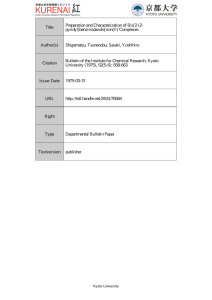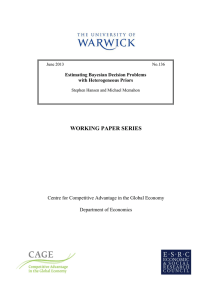English - DELIVER Project
advertisement
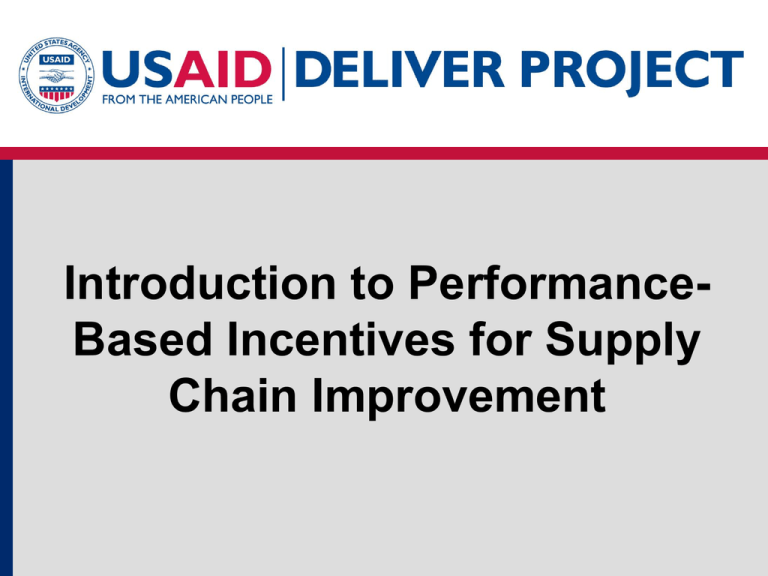
Introduction to PerformanceBased Incentives for Supply Chain Improvement Icebreaker instructions: • Find your match. • Introduce yourself. • Briefly discuss how the concept on the card could be used to improve supply chain performance. • Be prepared to introduce your partner to the large group. General Definition of Performance-Based Incentives • Cash or non-monetary benefit provided against measurable actions or achievement of a defined performance target. Session Objectives: • Define what performance-based incentives (PBI) means. • Identify possible benefits of PBI for managing health commodities. • Explain examples of how PBI was used to improve supply chain performance—both commercial- and public-sector. • Identify opportunities for applying PBI to improve performance of their supply chain, or a supply chain in a given situation. • Identify sources of information/resources to find out more about PBI for supply chains and how to design and implement a scheme. PBI in the Commercial Sector • Sales-Based Performance Offers (SBPO) Discounts or additional free product offered by supplier to customers purchasing high volumes: – Engenders customer loyalty and attracts new customers – Increases volume of sales and profit for both supplier and customer. PBI in the Commercial Sector (cont.) • Supply Chain Performance-Based Incentives (SCPBI) Rewards partners in supply chain when they achieve a measureable goal: – Used to manage supplier relationships Example: Bonus pay for consistent on-time delivery during a specific period. PBI in the Commercial Sector (cont.) • Gain sharing Supply chain partner shares a percentage of revenue with one or more of their third party logistics providers (3PLs), based on achieving mutually beneficial, measureable performance goal – Builds relationships and aligns performance objectives. • Individual payment increases, incentives, and bonuses Individuals in supply chain rewarded for specific, measureable performance goal – Bonus, salary increase, stock option, company car. Discuss with your neighbor… 1. What lessons can we learn from commercial-sector PBI that might benefit public health supply chain managers? 2. What successful PBIs does the commercial sector have in place or use that the public sector could also use? PBI Lessons from Commercial Sector • Performance indicators are well-defined. • Supply chain partner objectives are aligned. • Partners have autonomy and authority to change and innovate to meet goals. • Information system is needed to provide valid and reliable performance data. • Need to verify data and adjust goals over time (raise the bar). PBI in Public Sector Supply Chain Management • Addressing LMIS performance – Paraguay: Family planning managers with no stockouts attended training or conference; received additional cash bonus. – Nicaragua: District health management units received computers and other equipment for high performance measured against 20 indicators related to using automated LMIS and data. – Ghana: Focus Regional Health Project awarded equipment to region with best performance on timely, accurate submission of data and training on reporting system. – Rwanda: Pay-for-reporting incentives given to CHW cooperatives for timely submission of quality reports. PBI in Public Sector Supply Chain Management (cont.) • Commodity availability – Haiti, Liberia, and Afghanistan: Donor-supported performance-based contracting with NGOs. Percentage of budget and bonuses for NGOs only paid based on indicators of commodity availability in the regions where NGOs are offering health services – Tanzania: Performance-based contracting incentivizes wholesaler distribution of essential medicines; wholesalers received bonus for achieving 95% commodity availability. Other Potential Areas for Using PBI in the Public Sector • Human resource – Motivate staff working in remote settings with bonus payments • Civil society – Find, support, and reward high-profile champions • Data visibility – Incentivize good performance by using real-time data at country level between partners/ client – Link data to performance indicators and health outcomes • Customers – Recognize and reward SDPs for good data submissions. Applying PBI—Small Group Assignment • Assign a notetaker and presenter for the group. Working as a group— • Identify one or more supply chain performance problems in your system or the case study provided, that you think could be addressed using a PBI initiative. • Work through the checklist to determine the feasibility of using PBI to address the problem. • If time allows, identify indicators and targets to measure progress in solving the problem, and mechanisms to verify progress against the indicators. • Prepare a brief report of the problem and how PBI could be used to address the problem.

